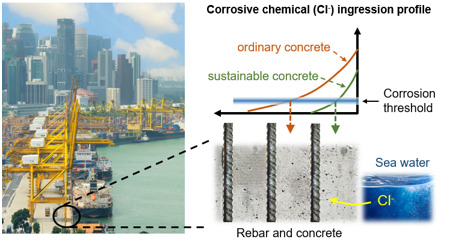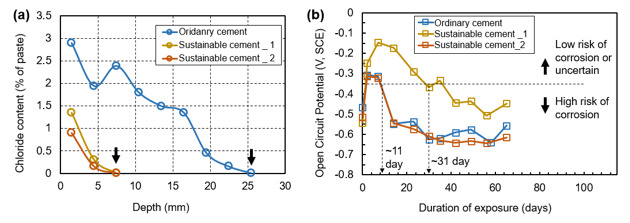-
-
- Bridging Scales from Below: The Role of Heterogeneities in the Global Water and Carbon Budgets
- Increasing Occurrences of Cyanobacterial Blooms Driven by Climate Change Factors
- Carbon Capture and Utilization
- Integrated Coastal-Inland Flood Model for Climate Change
- Pathways for Sustainable and Climate-Resilient Planning of Water-Energy-Food Security Nexus
-
- Air Quality and Health: A Paradigm Shift
- Surface Water Quality and Emerging Contaminants
- Microbial detoxification of persistent organohalide pollutants (POPs)
- Nutrients Removal in Waterbodies via Sustainable Pathways
- Centre for Water Research (CWR) researchers join their forces with U of T researchers for microplastics pollution detection and control in water and wastewater
- Dealing with Hard-To-Treat Industrial Wastewater
- Valorization of Bioresources – Towards a Circular Economy
-
- Intelligent Traffic Diffusion Plan Generation, Effective Assessment and Dissemination Strategies
- Transforming Waste into Resources for Infrastructural Development
- Look-Ahead Integrated Geophysical Investigation System (IGIS) for Singapore Tunnels
- Next-Generation Airport Pavements with Full-Scale Instrumented Testing
-
- Centre for Advanced Materials and Structures
- Centre for Hazards Research
- Centre for Resilient Underground Infrastructure and Engineering (CRUISE)
- Centre for Transportation Research
- Centre for Water Research
- Centre for Resource Circularity and Resilience (CR)2
- Centre for Offshore Research and Engineering (CORE)
- Centre for Environmental Resilience
- Safety & Health Committee
- Completed Research Projects
- Research Brief
- Achievements (in the media)
Upcycling Local Waste for Sustainable Concreting in Marine Conditions
Concrete manufacturing contributes to more than 8% anthropogenic CO2 emission every year. Singapore is a tropical island country where the degradation of construction material is rapid. It is also short of natural resources for construction, and land area for waste deposition. An integrated solution to all these problems is proposed by our team at NUS. We research and innovate the protocols to use the local waste, such as marine clay and municipal waste ash to replace natural constituents for concreting. Both performance and long-term serviceability of our sustainable concrete are proven comparable or even better than conventional concrete

Concrete is vital to modern construction. It is consumed in such huge quantities that it accounts for ~8% anthropogenic CO2 emission, which mainly comes from the manufacturing of cement. The construction practice in Singapore yearly produces 8-10 million m3 of soft marine clay. Deposition of these clay materials demands a large land area. Meanwhile, other types of solid waste such as incinerated municipal waste ash are also generated in gigantic amounts and end up being landfilled in the offshore Semakau Island, which is projected to run out of capacity by 2035.
Recently, via replacing as much as 50% PC with limestone and clay (calcined to only 700-800°C), a novel cementitious system named ‘Limestone Calcined Clay Cement’ (LC3) has been reported. It exhibits a comparable performance as PC, while reducing the net CO2 emission by as much as 40%. This new cementitious recipe has inspired us to develop a sustainable concrete using the above mentioned solid waste. The marine clay could provide the reactive kaolinitic content, and other solid waste may provide the carbonate contents. The developed cementitious system is proven to have an extremely low permeability, which in turn provides a robust sealing for the harmful content in the solid wastes.
Experiments were conducted to investigate the performance of the sustainable cementitious system, particularly their durability in marine condition. Mortar cube specimens were made and exposed to simulated seawater for several months. After three months, chloride penetrates to a depth of ~25 mm in ordinary cement system, but only ~7.5 mm in the sustainable cement system (Figure 1a). Electrochemical measurement indicates that the sustainable cement_1 is more resistant to rebar corrosion, as it takes three times the accelerated exposure time for the corrosion potential to drop to the corrosion-risk region, compared with ordinary cement, and other sustainable cement system which has an over-substitution of OPC content.

Figure 1. (a) Chloride ingress profile after 91 days of exposure. (b) Open circuit potential as a function of exposure time
Strength is also a key index to evaluate the performance. Figure 2 is an example of the early strength development of several sustainable cement systems. In particular, several systems contain up to 20% dosage of the municipal incineration fly ash (IFA). At 7 days, the strength of all systems are comparable. IFA seems to be more compatible with LC3 compared with OPC, indicating that the synergetic treatment of marine clay and incineration ash has extra benefits for the strength.

Figure 2. Strength development of mortar samples (w/c =0.4) made with ordinary cement (OPC), sustainable cement (lC3) and Municipal incineration fly ash (IFA). A and B denotes the LC3 samples with IFA untreated (A) and pre-washed (B)
The project has the following impact on the construction industry and society. It provides a solution to turn local solid waste into valuable construction materials. The novel cementitious system may elongate the service life of construction materials in marine conditions. Lastly, it contributes to Singapore’s plan of a low-carbon city development, via reducing the consumption of ordinary cement which has a heavy carbon footprint
For more details, please contact:
Dr Geng Guoqing
Email: ceegg@nus.edu.sg

